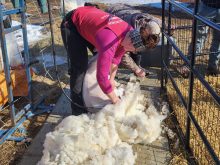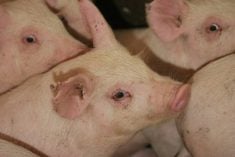When the U.S. border didn’t reopen to Canadian beef March 7, one of the first things cattle producers did was ask governments for a guarantee that the fed cattle set-aside program would continue.
While some of the earlier BSE programs had limited success, the fed cattle program has worked, said Brad Wildeman of Pound-maker Agventures Ltd., in Lanigan, Sask.
“Feedlot owners would say this has been the most successful of the things done,” he said. “It gave them some options when they really need it the worst.”
Read Also

Charges laid after cattle theft
Saskatchewan RCMP lay two charges against a man after six cattle went missing.
The program was designed to balance the supply of fed cattle with the markets. Feedlot owners could submit bids on how much they were willing to feed cattle for during the 91 day set-aside period. The lowest bids were accepted until a certain number of cattle needed to balance supply and demand were met.
In Alberta, producers could lock in a weekly basis, the difference between the U.S. Midwest market price and the average Alberta market price. If the basis was larger when the animals were sold, they received a top-up.
While Wildeman has just started using the program, he said setting aside cattle created a stronger overall market.
“It worked for me just as well and I didn’t have to put them aside.”
Lloyd Andruchow of Alberta Agriculture said the fed cattle program has acted as a fourth buyer in the market.
“Ever since we talked about it we’ve seen improvement in prices, confidence in the industry and narrowing of basis between U.S. and Alberta price.”
When feedlots didn’t feel they were getting a fair price from the packers, they could choose to set the cattle aside.
“Just by managing a very small percentage of the cattle, we saw improvements in basis levels and price levels for the entire industry. It was a simple managing of the supply from week to week to restore competitiveness,” Andruchow said.
The Alberta government has pledged its continued support for the program, he added.
Dave Boehm, director of the financial programs branch of Saskatchewan Agriculture, has also pledged the government’s continuing support.
“We do think it is worthwhile in helping to maintain price.”
Lorne Martin, acting assistant deputy minister with Manitoba Agriculture’s policy and economics division, said while there haven’t been many Manitoba cattle placed in the program, it has helped offset the cost of feeding cattle while sales were delayed.
The average bid for feeding cattle during the 22 weeks that the program has operated has been about $1.40 per head per day.
“It’s a reasonable amount. It’s helped,” he said.
















